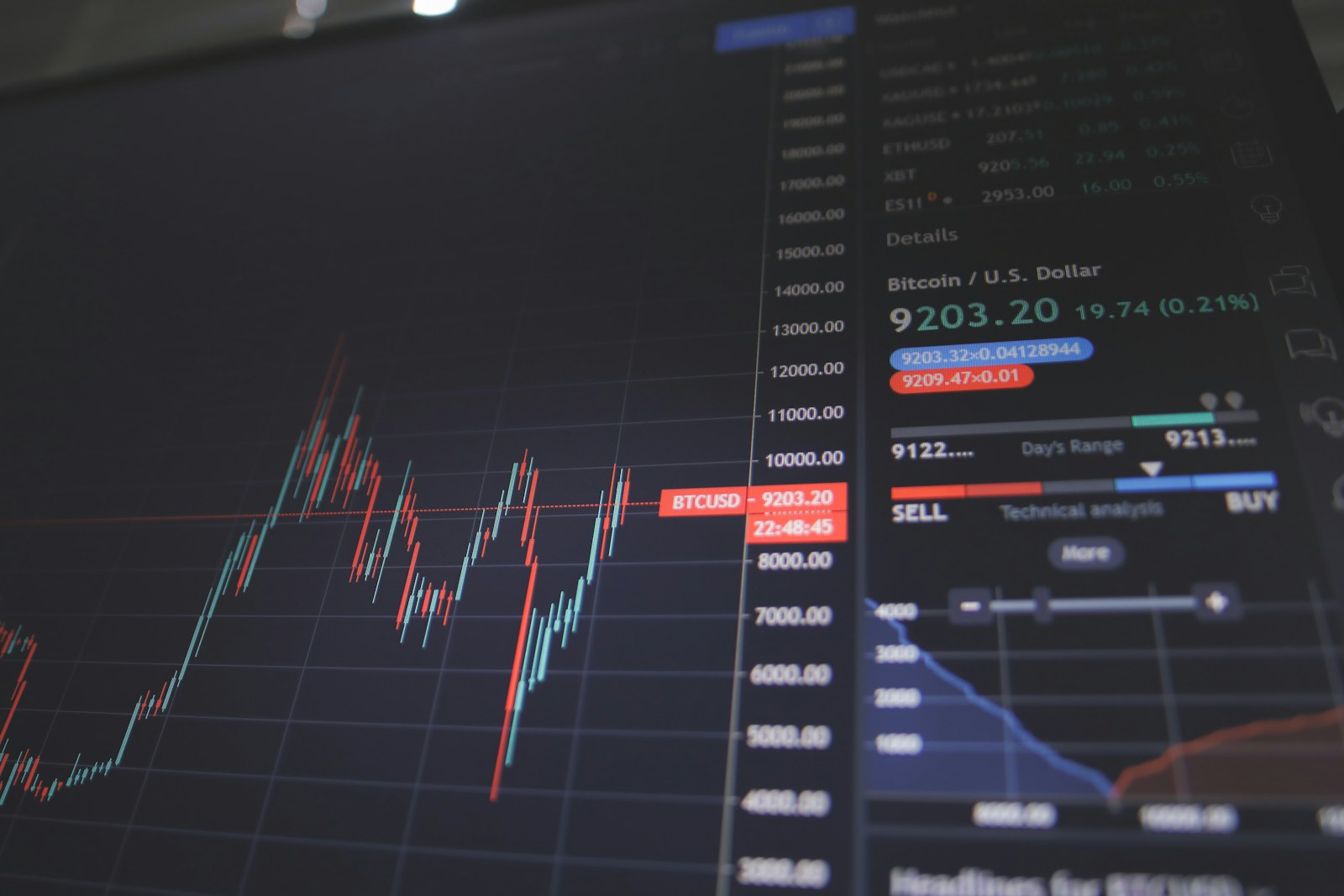Governance tokens grant holders the ability to influence decisions within decentralized autonomous organizations (DAOs). These digital assets serve as a form of membership that carries specific entitlements, primarily related to participating in polls or proposals that shape project direction. Unlike traditional shares, these units enable a more direct and transparent method of collective decision-making.
In practice, possessing such coins means you can cast ballots on protocol upgrades, fund allocations, or rule modifications. This mechanism mirrors democratic principles by distributing influence according to token ownership. However, the weight of each vote depends on the number of tokens controlled, which raises important questions about power concentration versus community input.
To effectively engage with these mechanisms, one should assess how voting power is allocated and understand the procedures behind proposal submissions and execution. Some DAOs implement time-locks or quorum requirements to ensure meaningful participation while preventing rushed changes. Recognizing these factors helps participants make informed choices and contributes to healthier ecosystem governance.
Ultimately, these governance instruments reflect an innovative approach to collective management where stakeholders actively contribute beyond passive investment. By grasping how decision rights operate through these unique digital assets, individuals can confidently participate in shaping decentralized projects aligned with their interests.
Understanding Crypto Governance Tokens: Voting Rights
Participation in decentralized decision-making is primarily enabled through specific digital assets that grant holders the power to influence protocol development and operational choices. These governance units are not merely financial instruments but act as keys to collective control within decentralized autonomous organizations (DAOs), allowing users to propose, debate, and approve changes that impact the entire ecosystem.
Such governance mechanisms rely heavily on a voting system where token holders exercise their influence proportionally to their stake. This setup ensures that those with more significant investment or interest in the platform have a stronger voice, thereby aligning incentives between contributors and decision-makers. For example, platforms like Compound or Uniswap distribute governance tokens enabling participants to shape protocol parameters such as fee structures or upgrade schedules.
Core Attributes of Governance Tokens
The tokens granting these participatory privileges typically carry embedded rights linked directly to the protocol’s ruleset. Holders receive capabilities including casting ballots on proposals, electing representatives, or initiating protocol adjustments. Importantly, these rights differ from conventional ownership since they do not guarantee equity but instead confer influence over decentralized operations.
- Proposal Submission: Token owners can introduce ideas for protocol improvement or policy amendments.
- Voting Power Allocation: Influence is often proportional to token quantity held, creating weighted voting systems.
- Delegate Mechanisms: Some protocols enable delegation where voting power can be assigned to trusted parties.
An illustrative case involves MakerDAO’s MKR tokens, where holders decide on collateral types accepted by the system and risk parameters impacting stablecoin stability. Through coordinated voting rounds, community members collectively steer strategic decisions affecting millions of dollars locked within the smart contracts.
The technological backbone facilitating these democratic processes includes on-chain voting modules integrated into smart contracts. These contracts automatically tally votes and enforce outcomes without centralized intermediaries. This automation reduces manipulation risks and enhances transparency by making all ballots publicly verifiable on blockchain explorers.
For newcomers aiming to engage with such governance systems, understanding token distribution dynamics is critical. Concentrations of power may emerge if large holders dominate votes, potentially undermining decentralization goals. Therefore, examining tokenomics–such as vesting schedules, circulating supply limits, and distribution methods–provides insight into how inclusive and resilient a DAO’s decision-making framework truly is.
How Voting Power Is Determined
The allocation of influence within decentralized organizations primarily depends on the quantity and distribution of specific digital assets held by participants. Usually, the more tokens an individual controls, the greater their capacity to impact decision-making processes. This proportional relationship between asset ownership and decision weight ensures that stakeholders with higher stakes can contribute more substantially to the collective direction.
However, this straightforward model sometimes incorporates additional mechanisms to balance power dynamics. For instance, some decentralized autonomous organizations (DAOs) implement quadratic voting systems or time-based locking of tokens to moderate excessive concentration of influence and encourage long-term commitment rather than short-term speculation.
Mechanics Behind Decision Influence in Decentralized Systems
One common approach assigns one vote per unit of governance token possessed, creating a direct correlation between holdings and sway over proposals. This linear model promotes a form of representative democracy where participants’ input scales with their investment size. Examples such as MakerDAO exhibit this method, granting holders proportional ability to approve protocol upgrades or parameter adjustments.
Alternatively, quadratic voting introduces a nonlinear formula that reduces incremental impact as token amounts increase. By requiring exponentially more tokens for additional voting power, it mitigates risks of monopolization by large holders and encourages broader participation from smaller stakeholders. Projects like Gitcoin employ quadratic voting to enhance fairness during grant allocation decisions.
Furthermore, some ecosystems incorporate delegation features allowing token owners to entrust their influence to delegates or representatives who vote on their behalf. This liquid democracy framework combines direct participation with proxy voting flexibility, optimizing engagement efficiency while preserving stakeholder interests. Aragon DAO provides such functionality enabling members unable or unwilling to vote directly still have voice through trusted agents.
A less commonly discussed but impactful factor is token vesting schedules and staking requirements which affect active participation rights. Some protocols restrict voting eligibility based on how long tokens have been held or require locking them for fixed periods to qualify for casting ballots. This encourages commitment aligned with project health rather than transient trading activity.
The overall architecture determining influence balances transparency with safeguards against centralization risks while promoting community involvement. Evaluating these models through empirical data reveals trade-offs between inclusivity, security, and effective management in decentralized ecosystems – knowledge crucial when engaging with any blockchain-based organization aiming for fair collective control.
Types of Governance Proposals
Proposals within decentralized autonomous organizations (DAOs) and blockchain protocols typically fall into several categories that determine how the community influences development and operational decisions. One primary type involves parameter changes, where stakeholders suggest adjustments to protocol variables such as transaction fees, block sizes, or staking requirements. For example, in the MakerDAO system, users vote on collateral types and stability fees to maintain system health. These proposals ensure continuous optimization of the network’s core mechanics without requiring centralized intervention.
Another common category includes fund allocation requests. Here, members submit proposals to direct treasury resources toward specific projects or initiatives, like funding a security audit or marketing campaign. Uniswap’s governance process frequently handles budgetary motions that require token holder approval before disbursing funds from its grant program. This financial oversight mechanism empowers participants to prioritize spending aligned with collective goals.
Additional Proposal Types and Their Impact
Protocol upgrades represent a more complex proposal class that often involves software changes such as hard forks or feature rollouts. These require rigorous community discussions due to their potential impact on consensus rules and network stability. The Compound protocol’s governance has facilitated upgrades by enabling token holders to approve new smart contract versions, illustrating how decentralized decision-making can guide technical evolution.
Governance structure modifications also form an essential category. Proposals may seek to alter voting mechanisms, delegate powers, or introduce new roles within the DAO framework. For instance, Aragon’s platform allows communities to propose changes in quorum thresholds or voting periods to enhance democratic participation quality. Adjusting these parameters helps balance inclusivity with efficiency in collective decision processes.
Delegation mechanisms explained
Delegation is a fundamental feature in decentralized autonomous organizations (DAOs) and blockchain protocols allowing participants to entrust their influence to others without losing their entitlement. This process enables token holders who may lack time or expertise to transfer decision-making power, ensuring active participation while maintaining the integrity of collective management. By assigning their voting capacity to trusted delegates, stakeholders enhance protocol efficiency and broaden representation.
In many systems, delegation operates through smart contracts that securely record and manage the transfer of authority. The delegate then exercises the delegated influence on behalf of the original holder during governance proposals and decisions. This arrangement preserves ownership rights over tokens, as delegation typically does not involve transferring actual assets but rather the capacity to contribute opinions or approvals within the DAO’s framework.
How delegation impacts participation in protocol decision-making
Delegated authority increases engagement by lowering barriers for individual stakeholders who might otherwise remain passive due to complexity or time constraints. For example, platforms like Compound use a liquid democracy model where token holders can delegate their say on protocol upgrades or parameter adjustments. This method allows active community members with domain knowledge to consolidate votes from less-involved users, streamlining proposal evaluations.
The process also introduces dynamic flexibility: delegations can be changed at any time by the original token holder, ensuring adaptability as preferences or trust relationships evolve. Furthermore, some protocols implement weighted delegation schemes where voting power corresponds proportionally to the number of tokens assigned to each delegate, reinforcing incentive alignment between voters and representatives.
- Example: In Aragon DAOs, delegation is optional but encouraged; users can assign delegates per proposal category, improving specialized decision-making.
- Example: Snapshot allows off-chain delegation through cryptographically signed messages, reducing transaction costs while preserving secure vote assignment.
The technical implementation requires transparent tracking mechanisms so all parties verify current delegations easily. Blockchain explorers and governance dashboards provide real-time visibility into delegated voting power distribution across participants. Such transparency discourages centralization risks by enabling community oversight and accountability toward delegates acting in good faith.
Understanding these mechanisms facilitates confident engagement in decentralized protocols by demystifying how individual influence can be optimized collectively. Delegation supports scalable governance structures that balance inclusivity with effective decision throughput–critical for sustainable project development in distributed ecosystems.
Impact of Token Distribution
The allocation of governance units within decentralized autonomous organizations significantly influences the balance of decision-making power. An equitable spread of voting assets promotes a democratic structure where stakeholders can actively participate in protocol evolution. Conversely, concentration of these instruments among a limited group risks centralizing influence, undermining collective engagement and potentially skewing outcomes toward narrow interests.
Analysis of prominent DAOs reveals that distribution models directly affect stakeholder motivation to engage in community proposals. For example, protocols utilizing linear distribution systems often face challenges with voter apathy due to unequal stake sizes. Meanwhile, quadratic or capped allocation approaches have emerged to encourage broader participation by limiting excessive control by large holders.
Distribution Models and Their Effects on DAO Functionality
Several frameworks govern how rights-bearing units are disseminated within blockchain projects:
- Uniform Distribution: Assigns equal shares regardless of prior involvement; fosters inclusivity but may dilute incentives for early contributors.
- Proportional Allocation: Distributes assets based on previous contributions or holdings; rewards commitment but risks centralization.
- Hybrid Systems: Combine fixed allocations with merit-based bonuses to balance fairness and motivation.
The chosen strategy impacts not only voting turnout but also the legitimacy perceived by participants. For instance, projects like Aragon implement staking mechanisms tied to reputation alongside token holdings to integrate qualitative factors into governance influence.
Technical data from Ethereum-based DAOs illustrates that highly skewed ownership correlates with lower voter diversity and increased proposal manipulation risk. This observation underscores the necessity for protocols to design distribution schedules mindful of long-term decentralization goals. Tools such as snapshot strategies and delegation can partially alleviate imbalance but cannot replace thoughtful initial dispersal planning.
Ultimately, the architecture around distribution molds how autonomous communities self-regulate and evolve. By carefully calibrating share issuance, projects can empower a wide range of members to exercise their participatory privileges effectively, sustaining both operational security and democratic ethos within decentralized ecosystems.
Risks in Governance Voting: Key Takeaways and Future Directions
Decentralized autonomous organizations face significant challenges when allocating decision-making influence through governance instruments. The disproportionate accumulation of voting power by a small subset of token holders can severely undermine the democratic nature of these ecosystems, leading to oligarchic control rather than collective stewardship. This concentration risk calls for innovative mechanisms such as quadratic voting or time-weighted delegation to better balance stakeholder participation and prevent dominance by whales.
Moreover, the technical architecture underpinning decision protocols must incorporate robust safeguards against voter apathy, collusion, and manipulation through flash loans or vote-buying schemes. Layering identity verification methods or integrating off-chain signaling tools could enhance legitimacy without sacrificing decentralization. As these systems evolve, continuous refinement in algorithmic fairness and transparency will be crucial to sustaining community trust and ensuring that governance processes genuinely reflect diverse stakeholder interests.
Future Implications and Strategic Recommendations
- Mitigate centralization: Encourage token distribution models that promote wider engagement, such as vesting schedules or capped voting power per address.
- Incentivize participation: Develop reward systems tied to active involvement in proposals to reduce passive holding and increase informed decision-making.
- Enhance security: Implement multi-factor authentication and on-chain reputation scores to reduce susceptibility to vote manipulation tactics.
- Integrate hybrid models: Combine on-chain voting with off-chain deliberation platforms to deepen discussion quality while preserving auditability.
The trajectory of decentralized collectives depends heavily on addressing these vulnerabilities with adaptive frameworks that balance inclusivity, security, and efficiency. By fostering equitable influence dynamics alongside transparent procedures, future iterations of decentralized organizations can more faithfully embody their foundational ideals–transforming theoretical democracy into practical governance. Participants equipped with a nuanced grasp of these dynamics will be better positioned to contribute meaningfully while safeguarding communal integrity throughout this ongoing evolution.





